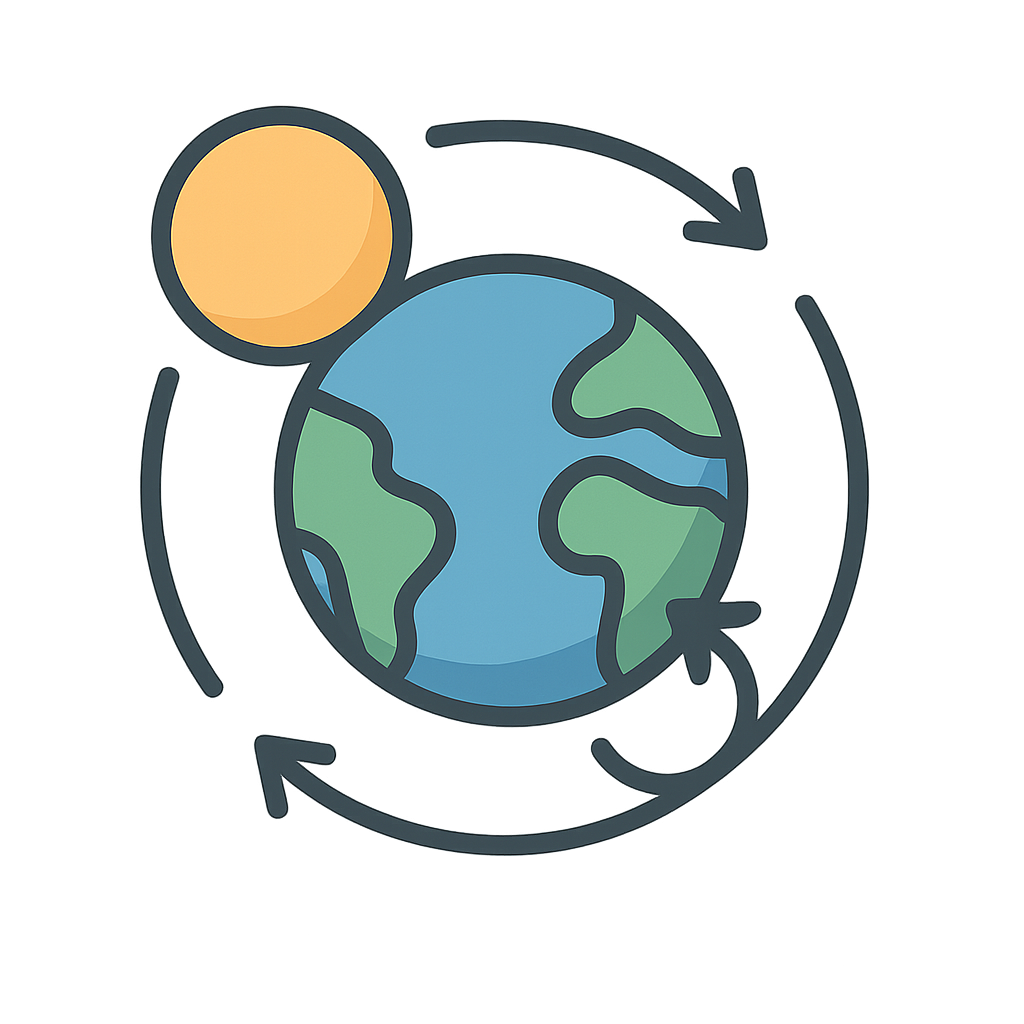The Dance of Day and Year
Have you ever noticed how the sun peeks over the horizon just in time for breakfast, and then sinks down to let the moon and stars come out to play right around your bedtime? It paints the sky with brilliant oranges, pinks, and purples every single day. Or how a warm, sunny summer day eventually gives way to a chilly winter evening, perfect for sipping hot chocolate? It all feels like a grand, predictable performance, a beautiful rhythm that your world follows without ever missing a beat. You might think it’s the sun doing all the moving, zooming across your sky while you stay perfectly still. But it’s actually a secret I share with your amazing planet. I am two partners in a cosmic dance: I am Rotation and Revolution.
For thousands and thousands of years, people would gaze up at the sky and feel certain that their home, the Earth, was the unmoving center of everything. It seemed so obvious. They felt the solid ground beneath their feet and watched as the sun, moon, and stars marched in a perfect parade across the sky above them. This idea made them feel very important. Great thinkers even made maps of the heavens based on this belief. Around the year 150 CE, a very smart astronomer named Ptolemy created incredibly detailed and complicated charts that showed how all the celestial bodies circled the Earth. His maps were used for more than a thousand years. But there were always a few little puzzles. Why did some planets, the ones they called 'wanderers,' sometimes seem to slow down, move backward for a bit, and then continue forward again? It was a good guess that Earth was the center, but something wasn't quite right.
Then, a new point of view began to dawn. A brilliant man in Poland named Nicolaus Copernicus spent most of his life quietly studying the sky, making careful measurements and thinking deep thoughts. In 1543, he bravely shared a revolutionary idea in a book. What if, he wondered, the Sun was the real center of our neighborhood in space, and the Earth was the one doing all the moving? This is where my two parts come in. I, Rotation, am the Earth’s daily spin, like a graceful pirouette a dancer makes. This spin is what gives you day and night as your side of the planet turns toward and then away from the sun. And I, Revolution, am the Earth’s long, year-long journey in a giant circle, or orbit, all the way around the sun. This journey is what marks the passing of a whole year. At first, this idea seemed very strange and even a little scary to people. But then, an Italian scientist named Galileo Galilei built a powerful new telescope. On the night of January 7th, 1610, he pointed it at the planet Jupiter and saw something astonishing: four tiny points of light circling it. They were moons. This was a huge clue. It proved that not everything in the universe circled the Earth, which helped show that Copernicus’s sun-centered idea was correct.
My dance is still the most important rhythm in your life. My steady spin, my rotation, gives you a fresh start every morning with a sunrise and a quiet time to rest and dream every night. My long journey around the sun, my revolution, works with the Earth’s special tilt to create the seasons. I tell farmers the right time to plant their seeds and the right time to harvest them. I give you hot days for swimming in a lake and cold days for building snowmen and celebrating holidays. I help scientists plan the perfect moment to launch rockets to explore other planets, because they know exactly where Earth will be in its journey. So the next time you watch the sun set or feel the first crisp breeze of autumn, remember me. I am the silent, steady dance of Rotation and Revolution that makes your world go ‘round.
Reading Comprehension Questions
Click to see answer
